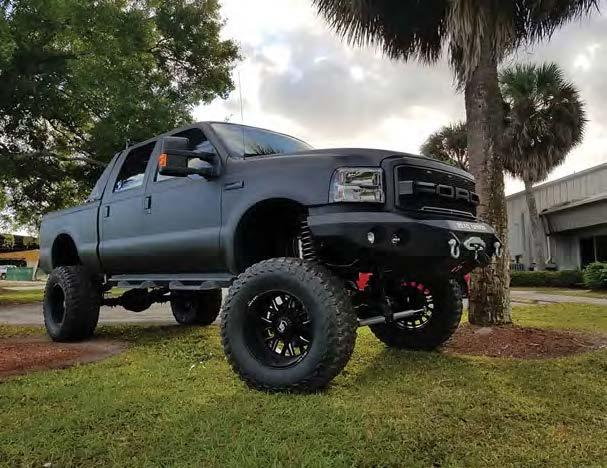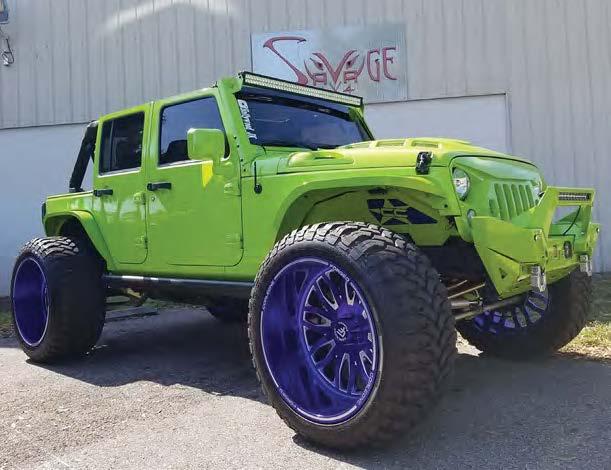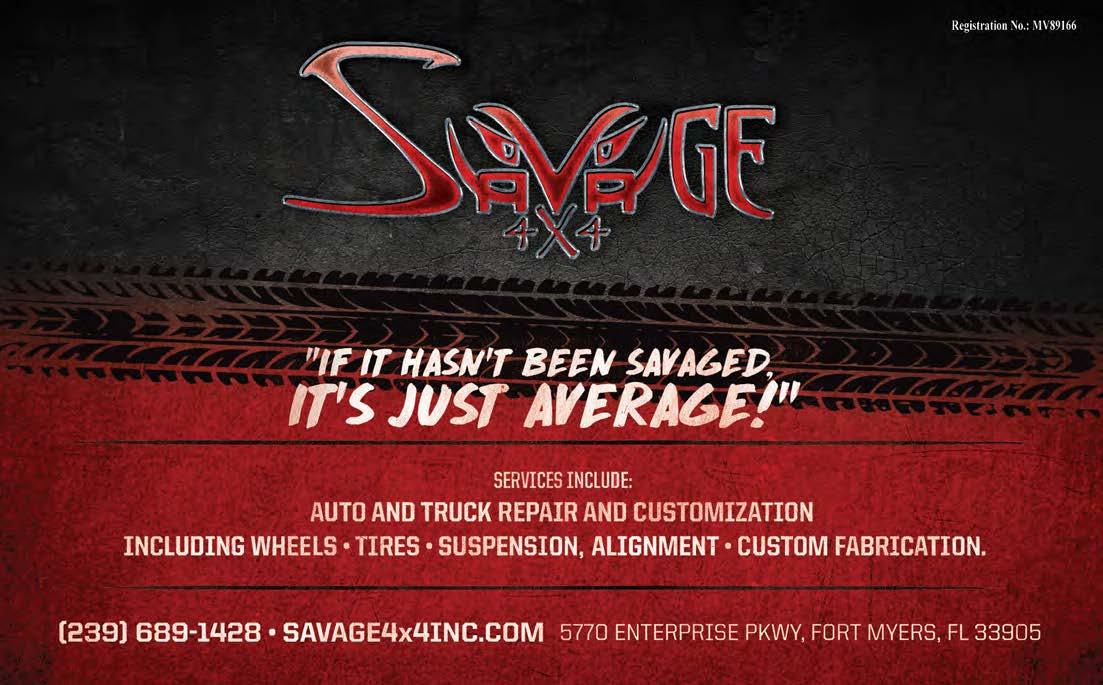
2 minute read
LIVING THE LIFTED LIFESTYLE
MAKE SURE YOUR TRICKED-OUT VEHICLES GET REGULAR CHECK-UPS AND MAINTENANCE
Written by: Savage 4x4/Linda Thompson
Driving a lifted vehicle is a lifestyle. And people who are living that lifestyle typically have a host of stories under their belt about triumph and failure when it comes to DIYs, mud holes and “shade tree mechanics.”
One thing that can instantly improve an experience with lifted vehicles is understanding that they require more maintenance than their non-lifted kin—and you must be sure to get a vehicle check-up after having a big lift installed. When you lift a vehicle, often you are cutting crossmembers, replacing control arms and replacing/relocating brake lines. A check-up on these components is a great way to catch problems before they catch up to you.
Here at Savage 4x4, located at 5770 Enterprise Parkway in Fort Myers, Florida, we have our customers return after 500 miles to check and retighten all fasteners. We mark fasteners at install so we can note any movement or backing off. This is also beneficial for those DIY folks. Don’t just take our word for it! Most reputable brands, including Rough Country Suspension Systems, say the same thing in their installation instructions. Rough Country recommends “all components must be retightened after 500 miles, and every 3,000 miles after installation,” as noted in the installation manual for a 2020 F250 6-inch suspension lift.
These recommendations coincide well with tire rotation and oil change intervals. We recommend getting those done also, while you’re at it!
Finally, we come back around to the facts that any seasoned lifted vehicle owner knows: Stuff wears out a little faster. When 14-inch-wide wheels were put on, the wheel bearings didn’t get any larger. When putting on 40-inch mud tires, ball joints are not stronger.

We see it all the time—moving components get swapped out sooner with a tricked-out truck. Most people know the cost of “admission” and gladly pay it to be a “cool daily driver” or a “capable weekend warrior.” Regular check-ups will help you catch rotating and moving parts that need your attention before they become a larger problem. See a theme here?
We’ve covered some basics for lifted vehicle maintenance, but what about when you sink it? You took your daily to the mud hole, got it washed off, but what now? Grease! When in doubt—grease!
Now not many stock components are serviceable or can be greased up years ago, but chances are that if you have a lift, some of those components are going to have grease fittings. When you push fresh grease into a moving part, you will also push out that mud and dirt that’s accumulated. This will extend the life of your moving parts and save you money.
The next items you are going to want to check are anything with a vent tube or fill tube. Depending on what you got in to, mud and water tend to make their way into gear boxes, differentials and transmissions. Pulling a transmission dipstick to check can save you a lot of money.
Differential fill plugs are a “tell,” as well. When differential fill plugs are checked on level ground, you should have little to nothing coming out because that is the fill line. If you see a bunch of goop coming out from a fill plug, you know it’s time to flush it out.
By following these recommendations, you will keep your vehicle running longer and save a lot of money! We at Savage 4x4 provide all of these services—and more. Call us at 239-689-1428 to get a quote. FCM












